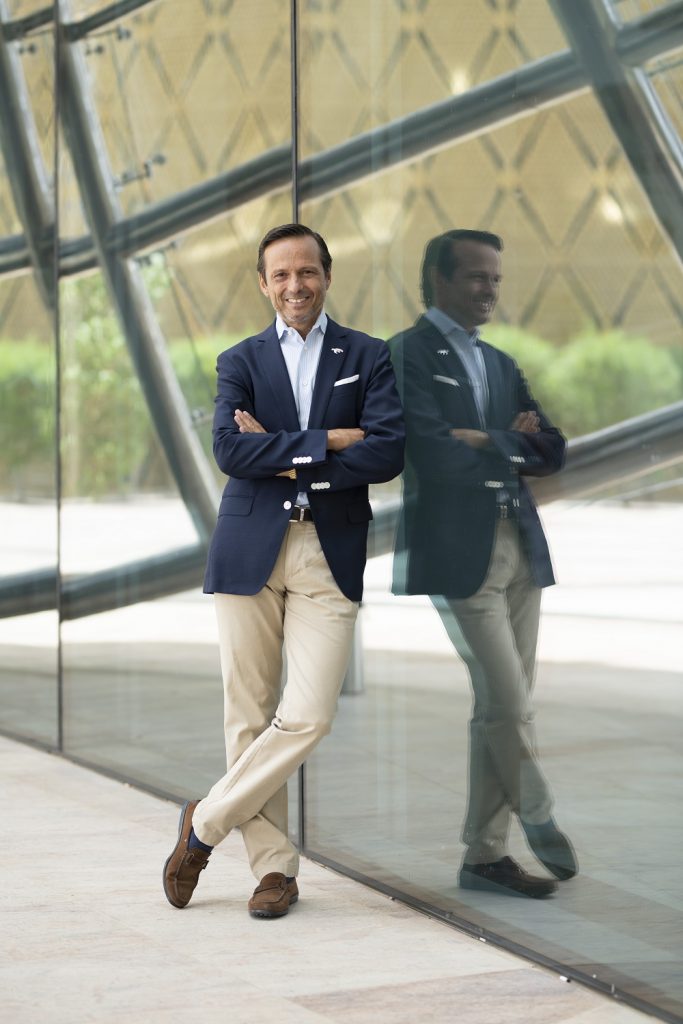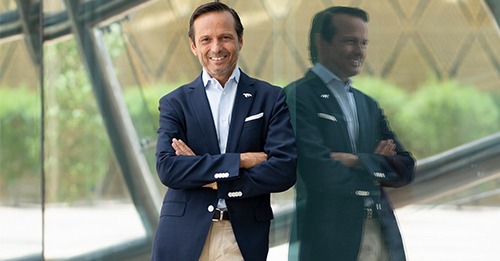 The Red Sea Development Company is the developer behind one of the world’s most ambitious regenerative tourism projects, The Red Sea Project, which spans 28,000 square kilometers on the western coast of Saudi Arabia. The project features an archipelago of more than 90 untouched islands, dormant volcanoes, mountains, 200 kilometers of scenic coastline, and other natural treasures, including some of the world’s last thriving coral reefs. HN spoke to the mega project’s CEO to unveil its development agenda and upcoming milestones.
The Red Sea Development Company is the developer behind one of the world’s most ambitious regenerative tourism projects, The Red Sea Project, which spans 28,000 square kilometers on the western coast of Saudi Arabia. The project features an archipelago of more than 90 untouched islands, dormant volcanoes, mountains, 200 kilometers of scenic coastline, and other natural treasures, including some of the world’s last thriving coral reefs. HN spoke to the mega project’s CEO to unveil its development agenda and upcoming milestones.
Tell us how The Red Sea Project complements Vision 2030?
The Red Sea Project is one of three giga-projects in Saudi Arabia and is dedicated solely to tourism. It will play an instrumental role in achieving HRH Crown Prince Mohammed bin Salman’s Vision 2030 – a plan to diversify the Kingdom’s economy and transform its socio-economic landscape.
The project will be a major contributor to the rapidly expanding tourism sector, considered a key pillar in the delivery of Vision 2030. We expect to create more than 35,000 direct job opportunities and a further 35,000 indirect and induced roles through various growth opportunities for local businesses and entrepreneurs.
Additionally, the project will contribute SAR 100 billion to the Saudi economy during the construction phases and once fully operational, it is expected to deliver 22 billion riyals each year. Over 70 percent of the total value of construction contracts have been awarded to Saudi companies to date.
Tell us more about the project’s development phases and what it will include?
Due for completion in 2023, phase one of the project includes 16 hotels across five islands and two inland resorts, marinas, leisure and lifestyle amenities, and a new state of the art international airport. The first four hotels and the airport will be complete by the end of 2022, at which point we will begin receiving our first guests. Designed by world-renowned architects Foster + Partners, the airport will provide a next-generation smart experience through innovative design and cutting-edge technology, creating exquisite travel experiences and making the project easily accessible from anywhere in the world. Upon completion in 2030, the destination will boast 50 hotels, offering 8000 hotel keys, and 1300 residential properties.
Did COVID-19 impact negatively on your development schedule?
The priority for the business during the pandemic was the safety of its employees. However, despite the challenges of the Covid-19, we have made substantial progress and remain on target to welcome our first guests by the end of 2022. In fact, to date, we have awarded more than 12.5 billion riyals in contracts and made headway with key infrastructure projects on site including marine infrastructure, 80km of new roads to connect the destination and our Coastal and Construction Villages.
Does it compete with other local projects such as AMAALA or Neom? Or do they complement each other?
Owned by the Public Investment Fund (PIF), these projects are designed to become important hubs of discovery and inspiration that will stimulate the economy and shape the future of tourism in the Kingdom. Neom is creating a fully-fledged ‘city of the future’ and Amaala is focused on art and wellness, which alongside our own luxury, regenerative tourism project creates a complementary ecosystem, particularly when combined with other leisure and tourism projects across the country, such as Qiddiya, Diriyah Gate and Al Ula. At The Red Sea Project, we are focusing on regenerative tourism. Nature is our most valuable asset and it influences every decision we take. We believe the current concept of what it means to be sustainable is no longer enough and as such our aim is to create best in class eco-friendly experiences and set new standards for the hospitality industry. Future guests will choose from a collection of luxury accommodation options that range from mono island properties to enriching desert experiences all within close proximity at a fully integrated destination. And all of this situated in one of the first tourism destinations in the world to be powered solely by renewable energy 24 hours a day.
Based on your expertise in this area, what will make this project stand out?
I believe that our groundbreaking approach to environmental regeneration, linked with a commitment to socio-economic development is what makes us stand out from the crowd. TRSDC goes beyond environmental considerations to consider the broader sustainability matrix and is laser focused on the socio-economic impact of the project for the local communities living in close proximity to the destination and the wider Kingdom. We are engaging with the local community on several fronts such as training and development as well as working with local service providers to integrate them into our business ecosystem and encouraging our partners to establish new manufacturing facilities at the site.
We want prospective visitors to discover the warmth of the local community and learn more about their rich cultural heritage. Nowadays, luxury is defined by authentic experiences that marry international standards with a local flavor and this is exactly what we aim to showcase at the destination. We want our visitors to enjoy an intimate and immersive experience of The Red Sea and the people who live there.
Who are your global hospitality partners?
We are thrilled that the major international hotel groups have shown tremendous interest in The Red Sea Project and we are currently in advanced discussions. Stay tuned as we reveal some names soon. What is important for us is that we select our business partners based on their clear alignment with the shared responsibility towards our sustainability objectives. As a developer, we are dependent on the efforts of our operators to ensure that the overall vision of the project is met. In partnership with our selected operators, we will be introducing best-in-class innovative operating equipment, processes and technology. The majority of back-of-house services (staff catering, laundry …etc.) will be centralized and handled on the mainland to ensure a minimal carbon footprint at the properties themselves where the surroundings are very fragile, and allowing our partners to realize a number of operational efficiencies.
Where do you see tourism in Saudi Arabia in the next five years?
From my interactions on the ground, it is apparent that our industry is experiencing a major shift in attitude. More and more young Saudis are taking up fulfilling jobs in hotels and restaurants. This is happening throughout the entire service industry including retail, beauty, transportation, health and fitness. This shift will eventually provide best in class customer service for tourists visiting the Kingdom. There is no doubt that the most important element of tourism is human capital. The Kingdom and the private sector are investing heavily on this front to ensure that a qualified pool of talent is ready to lead. Our recent research study, “Future Faces of Tourism”, revealed that young Saudis are less interested in careers in more “traditional” sectors such as oil and gas, but favor those within the country’s strategic growth industries aligned with Saudi Arabia’s Vision 2030. Tourism and hospitality are regarded as the top jobs that young Saudis are interested in, with 91% keen to pursue a career in tourism.

















